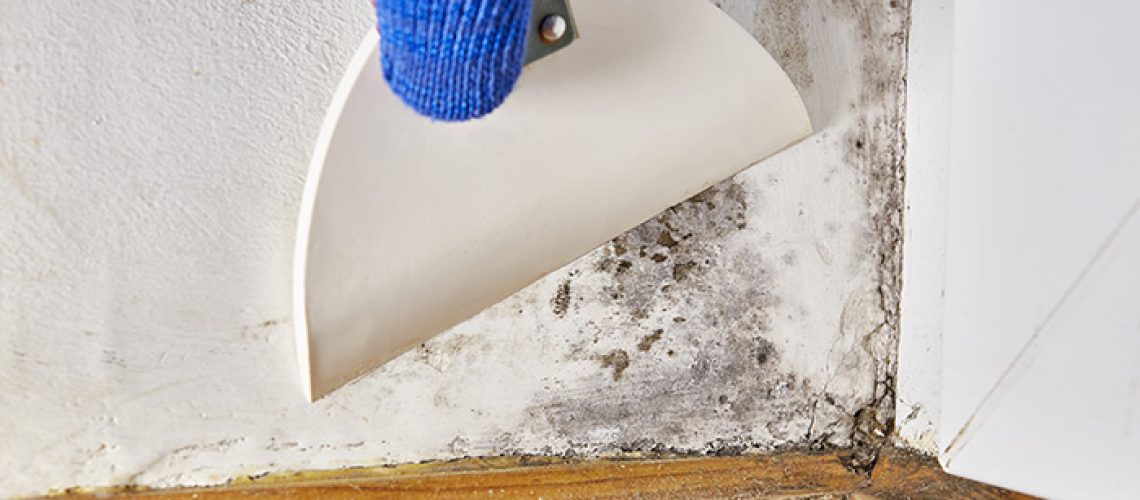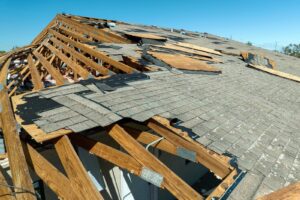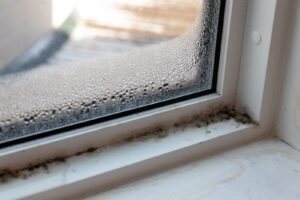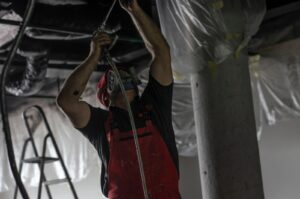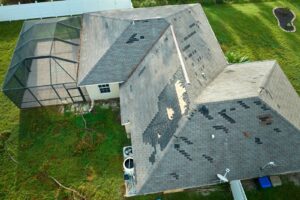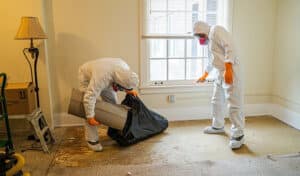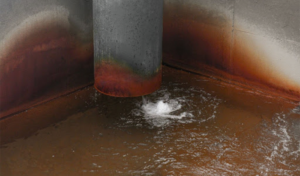Mold is a common but often overlooked issue that can seriously affect your health and well-being. While some molds are relatively harmless, others produce toxic substances known as mycotoxins, which can lead to various health problems, from allergic reactions to more severe respiratory issues.
In this blog, we’ll delve into the different types of toxic molds — Black Mold (Stachybotrys), Aspergillus, Penicillium, Memnoniella, and Alternaria — explaining what they are, where they’re commonly found, and the health risks they pose.
We’ll also provide tips on identifying these molds and what steps to take if you discover them in your living or working environment.
Stay tuned to give yourself the knowledge you need to maintain a healthier, mold-free space.
What Is Mold?
Mold is a type of fungus that forms multicellular filaments known as hyphae, collectively forming a structure called mycelium. Thriving in warm, damp, and humid conditions, mold spores are virtually omnipresent, indoors and outdoors.
While molds play a crucial role in decomposing organic matter in nature, their presence indoors can be problematic. Mold produces allergens and irritants; some types even produce toxic substances called mycotoxins.
Mold exposure can lead to various health issues, such as respiratory problems, skin irritation, and allergic reactions. Due to these potential health risks, managing and preventing indoor mold growth effectively is essential.
Why Some Molds Are Dangerous
The mycotoxins we just mentioned – including aflatoxins, ochratoxins, and trichothecenes – are responsible for making some types of mold toxic and, as a result, are dangerous for us to ingest, inhale, or absorb through our skin.
Of course, no one would intentionally expose themselves to a toxic mold, but what if we don’t know what that mold looks or smells like?
That’s why we’re looking at the types of mold to keep an eye out for. Let’s take a closer look so you can identify them and keep you and your family safe from them.
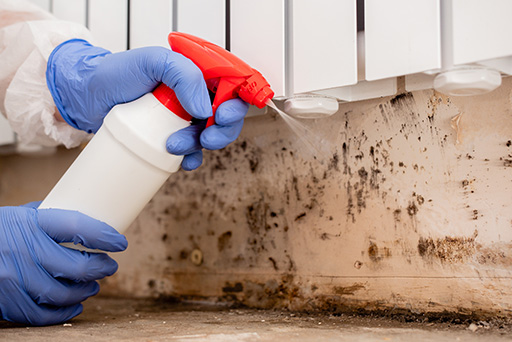
5 Molds to Keep an Eye Out For
1. Black Mold (Stachybotrys):
Black mold, scientifically known as Stachybotrys chartarum, is a toxic mold that produces mycotoxins, specifically trichothecene mycotoxins.
It is often associated with poor indoor air quality and can pose significant health risks when present in large amounts. Black mold thrives in damp, humid environments and is commonly found in areas where water damage has occurred, such as basements, bathrooms, and kitchens.
Exposure to black mold can lead to various health issues, including respiratory problems, skin irritation, and allergic reactions. In severe cases, prolonged exposure can result in more serious conditions like chronic lung illnesses or immune system suppression.
Here’s how to identify black mold:
- Color and texture: Black mold is usually dark green or black in color and has a slimy texture when wet. When it dries out, it can become powdery.
- Location: It often grows in areas that are consistently damp or have suffered from water damage. Check for leaks in your roof, pipes, or walls, as these are common areas where black mold can grow.
- Odor: Black mold often emits a musty, earthy smell. If you notice an unusual odor in a damp area of your home, it could be a sign of black mold.
- Water stains: Look for water stains or discoloration on walls, ceilings, and floors. These could indicate a moisture problem that could support black mold growth.
2. Aspergillus:
Unlike black mold, Aspergillus is commonly found both indoors and outdoors. It can grow on various substrates, including soil, decaying vegetation, and even food products like grains and bread.
Certain species of Aspergillus produce mycotoxins, such as aflatoxins, which can be harmful when ingested, inhaled, or come into contact with the skin.
Exposure to Aspergillus can lead to various health issues, depending on the species and the individual’s immune system.
It can cause allergic reactions and respiratory problems, and in severe cases, it can lead to aspergillosis—a group of diseases affecting the lungs or the whole body. Immunocompromised individuals are at higher risk for severe health complications from Aspergillus exposure.
Here’s how to identify Aspergillus:
- Color and texture: Aspergillus molds can vary in color, ranging from blue-green to yellow or even white. The texture can be powdery or wooly.
- Location: Aspergillus is commonly found in areas with high humidity and poor ventilation, such as bathrooms, kitchens, and basements. It can also grow on food, so check stored grains and other perishables.
- Odor: While not always noticeable, some species of Aspergillus can produce a musty smell.
3. Penicillium:
Penicillium is a genus of mold belonging to the Penicillaceae family. Known for its importance in the production of the antibiotic penicillin, this mold is commonly found in indoor and outdoor environments.
Penicillium species are usually saprophytic, meaning they feed on decaying organic matter. They can grow on a variety of substrates, including food, soil, and indoor surfaces like wallpaper, insulation, and carpets.
While Penicillium is generally less harmful than other toxic molds like black mold, exposure can still lead to allergic reactions, asthma, and respiratory issues, especially in immunocompromised individuals or pre-existing health conditions. Some species of Penicillium can also produce those harmful mycotoxins.
Here’s how to identify Penicillium:
- Color and texture: Penicillium molds are often blue or green and have a velvety texture. The color can vary depending on the species and age of the mold.
- Location: Penicillium is commonly found in damp or water-damaged areas, such as basements, bathrooms, and kitchens. It can also grow on food items like cheese, bread, and fruits.
- Odor: Penicillium may produce a musty or mildew-like odor, which can be a clue to its presence.
- Visual inspection: Look for visible signs of mold on walls, ceilings, and other surfaces, especially in areas with high humidity or water damage.
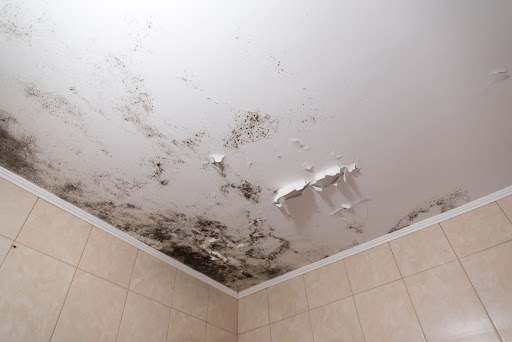
4. Memnoniella:
Memnoniella is a genus of mold closely related to the more commonly known Stachybotrys, or black mold. Like Stachybotrys, Memnoniella species are also known to produce mycotoxins, which can be harmful to both humans and animals.
Memnoniella typically thrives in damp, humid environments and is often found in areas with water damage or poor ventilation. Memnoniella is commonly found on cellulose-rich materials such as paper, wood, and drywall.
Exposure to Memnoniella can cause respiratory problems, skin irritation, and allergic reactions. The presence of mycotoxins can exacerbate these health risks, making it crucial to address any Memnoniella infestations promptly.
Here’s how to identify Memnoniella:
- Color and texture: Memnoniella usually appears as a dark-colored mold, often black or gray. The texture can vary but is generally not slimy, unlike Stachybotrys.
- Location: Look for Memnoniella in areas prone to moisture and water damage, such as basements, bathrooms, and kitchens. It often grows alongside or in similar locations as Stachybotrys.
- Odor: Like other molds, Memnoniella can produce a musty, earthy smell, which can indicate its presence.
- Visual inspection: Check for visible signs of mold growth, especially in damp areas or where water damage has occurred. Memnoniella often grows in patches and may resemble Stachybotrys.
5. Alternaria:
Alternaria is a common genus of mold that is frequently found both indoors and outdoors. It is one of the most widespread molds and is often associated with allergic reactions.
Alternaria species are commonly found in the environment, growing on plants, soil, and various types of organic matter. Indoors can be found in areas prone to dampness, such as bathrooms, kitchens, and basements.
Exposure to Alternaria can lead to a range of health issues, particularly for those who are allergic to mold. Symptoms can include sneezing, runny or stuffy nose, itchy or watery eyes, and skin rashes. Exposure can exacerbate asthma symptoms and lead to respiratory infections in more severe cases.
Here’s how to identify Alternaria:
- Color and texture: Alternaria mold is usually dark green to brown or black in color. It has a velvety or wooly texture due to the presence of fine filaments on its surface.
- Location: Alternaria commonly grows in damp areas. Check places like shower stalls, bathtubs, sinks in the bathroom, and under leaky pipes or roofs.
- Odor: Like many other molds, Alternaria can produce a musty or earthy smell, which can indicate its presence.
- Visual inspection: Look for visible signs of mold growth. Alternaria often forms dark spots or streaks on walls, ceilings, and other surfaces.
Call Restoremasters Today
Don’t let toxic mold put your health and home at risk. If you’ve identified or suspect the presence of harmful molds in your living or working environment, it’s crucial to take immediate action. Your best option is to let the professionals handle the mold since it is dangerous.
Restoremasters specializes in toxic mold remediation, providing fast, effective, and safe solutions to eliminate mold and prevent future growth. Our certified experts use state-of-the-art equipment and proven techniques to ensure your space is mold-free and healthy.
Don’t compromise on your well-being; contact Restoremasters today for a thorough inspection and high-quality mold remediation services. Your health is too important to wait! Call us at 801.948.2478 or fill out our website form to schedule your appointment!

